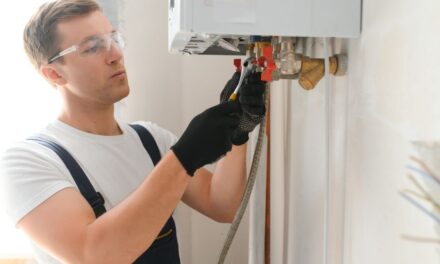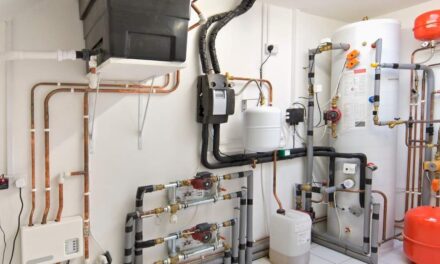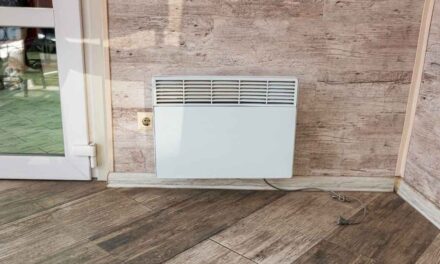Your Heating Controls Heating your home efficiently is essential for staying comfortable while keeping energy bills under control. In the UK, where winters can be long and chilly, smart thermostats and zonal heating systems offer innovative ways to optimise your heating. By using these technologies effectively, you can reduce energy waste, save money, and create a cosier living environment. This blog provides practical tips on maximising your heating controls for efficiency.
Understanding Smart Thermostats
Smart thermostats are advanced devices that allow you to control your heating remotely and automate temperature settings based on your schedule and preferences. Unlike traditional thermostats, they learn your habits and adjust heating accordingly, ensuring your home is warm when you need it and saving energy when you don’t.
Tips for Using Smart Thermostats
- Set a Schedule: Program your thermostat to lower the temperature when you’re out of the house or asleep and warm up the house before you return or wake up. This prevents unnecessary heating and reduces energy consumption.
- Use Geofencing: Many smart thermostats have geofencing features that detect when you’re leaving or approaching home. This allows the system to adjust the temperature automatically, ensuring comfort and efficiency.
- Monitor Energy Usage: Most smart thermostats provide detailed energy usage reports. Use this data to identify patterns and make adjustments to further reduce consumption.
- Integrate with Other Smart Devices: Connect your thermostat to other smart home devices, such as voice assistants or smart radiators, for seamless control and enhanced efficiency.
- Adjust for Seasonal Changes: Update your thermostat settings as the seasons change. For example, lower the temperature slightly in winter and use the thermostat’s “away mode” during summer holidays.
Exploring Zonal Heating
Zonal heating allows you to divide your home into different zones and control the temperature in each area independently. This is particularly useful for larger homes or households where different rooms are used at different times.
Tips for Using Zonal Heating
- Identify Key Zones: Divide your home into zones based on usage patterns. For example, living areas can be one zone, while bedrooms can be another. This ensures you only heat the spaces you’re using.
- Install Smart Radiator Valves: Smart radiator valves enable you to control the temperature of individual radiators. Pair them with a smart thermostat for precise zonal heating management.
- Set Zone Schedules: Program each zone to heat up at specific times. For instance, heat the living room during the day and the bedrooms in the evening.
- Use Occupancy Sensors: Some zonal heating systems come with occupancy sensors that detect when a room is in use. This ensures heating is only activated when needed.
- Balance Your System: Ensure your heating system is properly balanced so that each zone receives the right amount of heat. This prevents some areas from being too hot or too cold.
Combining Smart Thermostats and Zonal Heating
When used together, smart thermostats and zonal heating create a powerful combination for maximising efficiency. Here’s how to make the most of both systems:
- Centralised Control: Use your smart thermostat as the central hub to manage all heating zones. This provides a unified view of your home’s heating and makes it easier to adjust settings.
- Automate Zone Heating: Program your smart thermostat to activate specific zones based on your daily routine. For example, heat the kitchen in the morning and the living room in the evening.
- Optimise for Occupancy: Use smart thermostats with occupancy detection to automatically adjust zonal heating when rooms are empty.
- Monitor and Adjust: Regularly review your energy usage data and make adjustments to your zonal heating settings to ensure optimal efficiency.
Additional Tips for Heating Efficiency
- Insulate Your Home: Proper insulation reduces heat loss, making your heating system more effective. Focus on loft, wall, and floor insulation.
- Seal Draughts: Use draught excluders, weatherstripping, and caulk to seal gaps around windows, doors, and skirting boards.
- Maintain Your Heating System: Service your boiler and radiators annually to ensure they’re working efficiently. Bleed radiators regularly to remove trapped air.
- Lower the Thermostat: Reducing your thermostat by just 1°C can save up to 10% on your heating bills. Aim for a comfortable temperature of around 18-21°C.
- Use Curtains and Rugs: Thick curtains and rugs help retain heat, especially in rooms with large windows or cold floors.
Conclusion
Maximising your heating controls for efficiency is a smart way to stay warm, save money, and reduce your carbon footprint. Smart thermostats and zonal heating systems offer advanced features that make it easier than ever to manage your home’s heating effectively.
By setting schedules, using geofencing, dividing your home into zones, and combining these technologies, you can create a heating system that works for your lifestyle. Add in proper insulation, regular maintenance, and small behavioural changes, and you’ll have a warm, energy-efficient home all winter long.
In the UK, where energy costs are a concern for many households, these strategies can make a significant difference. Take control of your heating today and enjoy the benefits of a cosier, more efficient home.
By optimising your heating controls, you’ll not only save money but also contribute to a more sustainable future. Stay warm, stay efficient, and make the most of your smart heating technology!
https://econgn.com/an-introduction-to-ground-source-heat-pumps/





